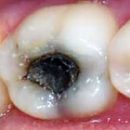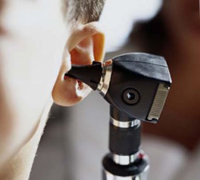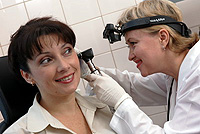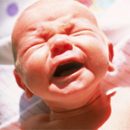All nuances of treatment of angina depending on its shape: purulent, herpetic, fungal. Application of antibiotics as a mandatory element of the ENT doctor.
Content
Even before the beginning of the treatment of Angina, the ENT doctor must determine its character, to identify a possible causative agent of the disease. The tactic of the patient depends on whether the bacterium, the virus or fungus caused an angina.
Treatment of purulent angina
 Treatment of purulent angina (it is more correct to call it follicular or lacunar) is made according to the fact that its pathogen — bacterium. Most often it is beta hemolytic streptococcus. It should be destroyed in the process of treatment.
Treatment of purulent angina (it is more correct to call it follicular or lacunar) is made according to the fact that its pathogen — bacterium. Most often it is beta hemolytic streptococcus. It should be destroyed in the process of treatment.
Antibacterial therapy plays a leading role in the treatment of the disease. Considering the danger of the disease, the doctor must act quickly. Obtaining results of analyzes, precisely identifying the pathogen and its sensitivity to medication, takes several days. During this period, the preparations of a wide range of action.
The antibiotic is selected with the most common pathogen. Since it is streptococcus, the antibiotics of the penicillin row are used primarily. It is the most sensitive microbe that is most sensitive. Use:
- Phenoxymethylpenicillin;
- amoxicillin;
- Complex drug Amoxiclav (Augmentin).
The latter is used in the severe thread of an angina or with the ineffectiveness of other preparations of penicillin row.
When allergic, doctors resort to other groups of antibiotics on this group of medicines — Cephalosporins and macrolides. To the first include cefalexin and cefuroxime. To the second — Azitromycin, which has the ability to quickly increase its concentration in the LOR-organ. In addition to it, Roxitromycin, Midekamycin, Spiramycin.
Finally, the reserve drugs used in the development of the most severe complications of angina are carbapenes. Imipenem (thienam) and Meropene — These are representatives of this group of drugs.
The use of antibiotics must be accompanied by the reception of drugs that prevent intestinal microflora disorders (lines, subtyl, bifidumbacterin). Women should be feared to the development of vaginal candidiasis. Therefore, they are prescribed fluconazole to prevent this unpleasant disease.
Sulfanimide drugs, which in the past were often used in the treatment of angina, lost their importance. This is due to the advent of bacteria strains, absolutely not sensitive to Biseptol and other medicines from this group.
Fluoroquinolones (Ciprofloxacin, Lofloxacin and T. D.) and tetracyclines are also not effective in angina, since they are not able to cope with hemolytic streptococcus.
Along with antibiotics antibiotics are prescribed: ibuprofen, paracetamol, acetylsalicylic acid. It should be remembered that aspirin is used only in the treatment of adults. In children under 15, he can cause Ray Syndrome — Heavy liver damage with high mortality.
Be sure to use antihistamines that reduce inflammation intensity.
Local treatment of angina
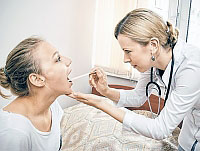 Local treatment of angina is carried out with confidence that it caused her no streptococcus, and another microbe. In such cases, bioparox proved well. This drug contains a fuzafungin antibiotic with a powerful antimicrobial effect. With a light form of the anesther of bioparox, it is enough to cure the patient. Of course, do not forget about the antipyretic drugs.
Local treatment of angina is carried out with confidence that it caused her no streptococcus, and another microbe. In such cases, bioparox proved well. This drug contains a fuzafungin antibiotic with a powerful antimicrobial effect. With a light form of the anesther of bioparox, it is enough to cure the patient. Of course, do not forget about the antipyretic drugs.
It is possible to use and the preparation of Stopangin, which, in addition to antibacterial, has antimicrobial effects.
Strepsils contains two antiseptics and lidocaine, anesthetic almonds.
Rinsing and irrigation of the throat did not lose their significance and in our time. Furacilina solutions, Miramistina and hydrogen peroxide, chamomile decractions and sage — All these drugs have strong antimicrobial activity. In addition, rinsing allows me to mechanically wash off a purulent raid with almonds. This achieves better penetration to the place of inflammation of antiseptics for local applications.
Angina treatment caused by viruses, fungi
With fungal angina, antibiotics are perfectly canceled. Vitamin preparations are prescribed, dissolving tablets with decalion chloride every hour or two. The affected almonds are lubricated with antifungal solutions: natamycin, terbinafin, barafin. Systemic antimitics are used: fluconazole, itraconazole.
In the viral nature, angina antibiotics are prescribed only if bacterial is attached to the main infection. The throat is irrigated by interferon, disinfectant solutions. In herpetic infection, acyclovir in tablets.

